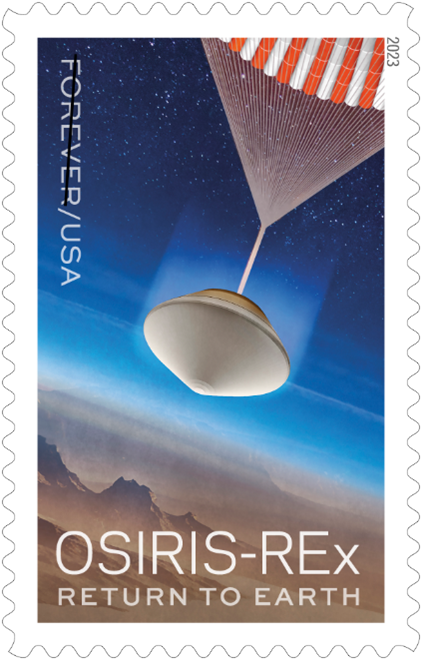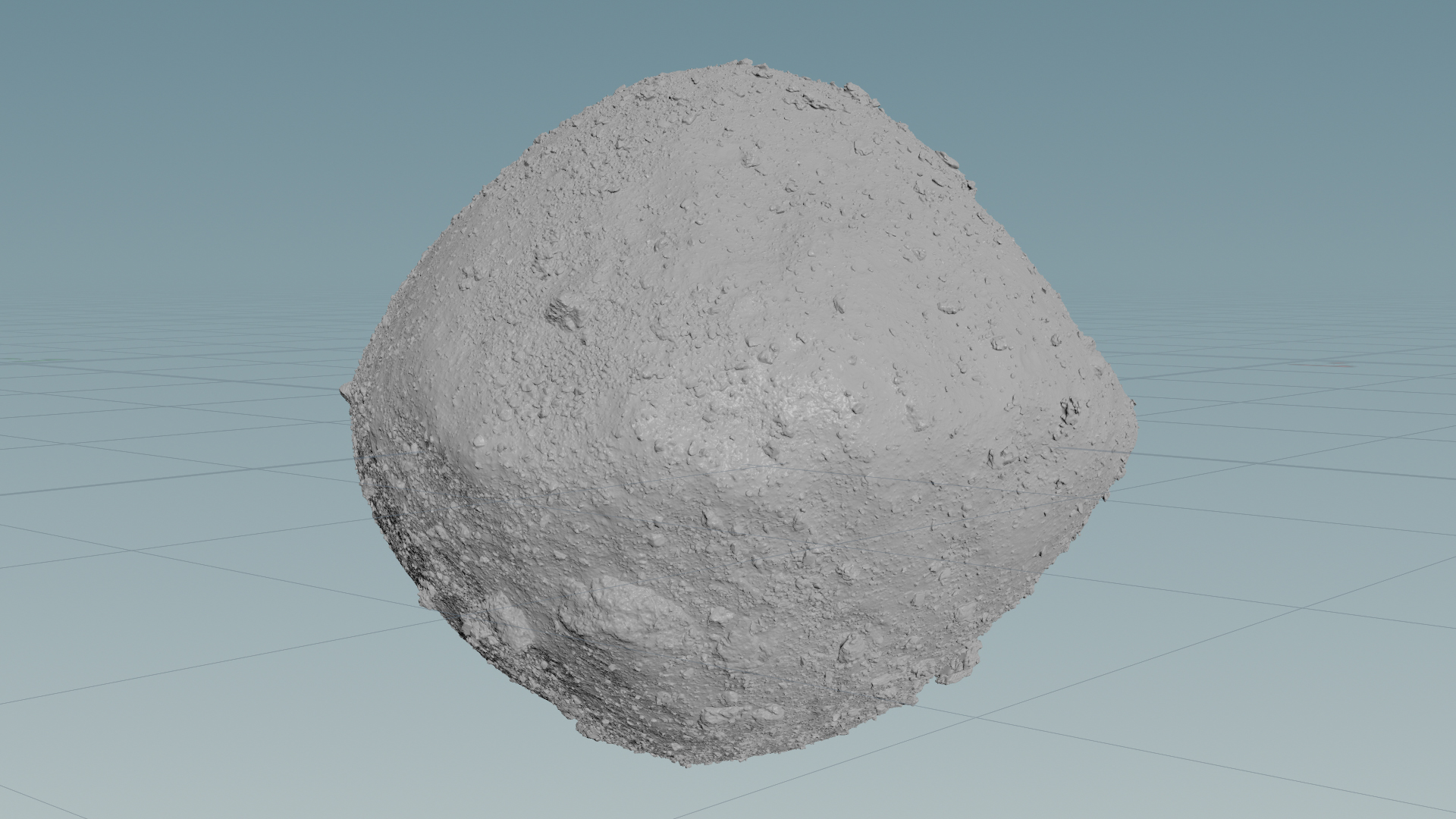-
Posts
264 -
Joined
-
Last visited
Content Type
Profiles
Forums
Developer Articles
KSP2 Release Notes
Posts posted by IonStorm
-
-
2 minutes ago, tater said:
Checked USPS, didn't see it... real thing to go with the Webb stamp? I don't even use stamps, but I'll buy some OSIRIS-REx sheets for our xmas cards (I'll tell my wife this design is super festive).
It was announced today https://about.usps.com/newsroom/national-releases/2023/0314-usps-updates-2023-stamp-program.htm
-
-
On my social media history page this week. Thank you KSP.

-
Do you want 3D files of Bennu for yourself? How about the sampling site before and after it was thrashed by the spacecraft? Well they are all here for the taking. All with the highest resolution data in existence. How about global mosaics? Got those too.
https://svs.gsfc.nasa.gov/5069 -
20 minutes ago, StrandedonEarth said:
Interesting, so it won't make rendezvous until after the close approach. While looking for that flyby speed, I found a 2013 paper on the possibility of a manned visit at that time, but i guess there was no will (or budget) to do that.
https://iaaspace.org/wp-content/uploads/iaa/Scientific Activity/conf/pdc2013/IAA-PDC13-04-20.pdf
A potentially hazardous object would have a low ∆V from Earth for encounter. But it would still be a very challenging mission for humans.
-
20 minutes ago, insert_name said:
Mission extension confirmed, going to Apophis in 2029!
https://www.nasa.gov/feature/nasa-extends-exploration-for-8-planetary-science-missions
Here's a little more detail: https://news.arizona.edu/story/nasa-gives-green-light-osiris-rex-spacecraft-visit-another-asteroid
As you know, once you go through the tremendous effort to get something into space you should use it as much a you can. The spacecraft is healthy and has enough ∆V to do more science after the sample is delivered to Earth for study.
-
-
On August 9 and 11, 2021, the video produced at NASA’s Goddard Space Flight Center, will be featured in the SIGGRAPH Computer Animation Festival Electronic Theater – a high honor for those in the graphic visualization field. Here is a making of, you might enjoy.
-
1 hour ago, StrandedonEarth said:
The Project Scientist for OSIRIS-REx also plays KSP and is active on the forum as @IonStorm. Incidentally, Dr. Brian May of Queen is also involved in the project, IIRC.
Hi, I got hooked from one of Scott Manley's KSP videos in 2011 since I was following him due to his wonderful asteroid orbit visualizations, though I'm a sloppy KSP player myself. @Jasonden is a deputy PI for Dragonfly and he plays KSP and is active on the forums.
Brian May likes making stereo pairs. This one from two images at different times from the same camera was a challenge for him to make, but is informative https://www.asteroidmission.org/stereopair/
My PhD is in biochemistry, but I apply it to planetary science. I've never been to space but did have the amazing opportunity to briefly work with Kate Rubins on the DNA sequencer on the ISS and talk with Leland Melvin about research, but I didn't ask him about his dogs. Starting your journey to space research or technology at a young age is awesome.
-
41 minutes ago, HebaruSan said:
I love how you (plural?) can just casually note nearly the exact spot where a tiny capsule will land on a rotating body from interplanetary space, years ahead of time.

It's just like landing at Kerbal Space Center, almost. Flight Dynamics must be using the Precise Node mod

-
7 hours ago, SunlitZelkova said:
Are there any plans to live stream the reentry and recovery? (by anyone, not just NASA)
There will be. The Sample Return Capsule (SRC) will land in the Utah Test and Training Range (UTTR)/Dugway Proving Ground, which is part of a military base, so there are restrictions. We will be planning the public engagement events to determine how to best share the experience. Landing at UTTR is necessary as it is a very large open space with enormous restricted airspace and the best radar coverage in the world to enable tracking of the SRC and ensure that it doesn't accidentally cause injury or property damage when it lands.
 '
'
It will be similar to the landing of the Stardust SRC in 2006, except during daylight and with higher resolution cameras.
-
Here's the departure special. Yours truly appears 32 minutes in. With Bennu in the (figurative) rear-view mirror, it is time to rehearse the recovery and perfect our lab methods. Also, look to where to go with the fuel we have left after delivering the samples to Earth.
-
14 minutes ago, HebaruSan said:
It's not this one, is it? The NASA Goddard Youtube channel may have jumped the gun.
Watching that made me think a lot of propellant was needed, but then the speeds are so low that maybe it's not so bad?
Awesome. I wasn't sure what time it would be out. These are tiny maneuvers. The smallest was 0.11 mm/s!
-
At the 4pm EDT nasa.gov/live broadcast today we will release the animation with ALL maneuvers around Bennu. #ToBennuaAndBack for questions on Instagram
-
On 4/9/2021 at 8:15 PM, IonStorm said:
The last flyover of the collection site happened this week. Early data is looking interesting. More to come soon.
Here it is. https://www.nasa.gov/feature/goddard/2021/nasas-osiris-rex-leaves-its-mark-on-asteroid-bennu

-
The last flyover of the collection site happened this week. Early data is looking interesting. More to come soon.
-
Cheers for the rebalancing of the Cupola in 1.11. I recommend a simple adjustment so that the increased view permit a scientist to collect EVA reports when in a Cupola, much like can be done in an External Command Seat.
Here is an old thread with similar idea.
-
The Planetary Society has named OSIRIS-REx “Planetary science mission of the year" and sample collection from Bennu “Most exciting planetary science moment” of 2020.
Also congratulations to Juno, JWST, SpaceX, LightSail 2, and SimgDe for their wins.
-
Just now, StrandedonEarth said:
Dr Brian May of Queen? That is so awesome that he’s working on this!
Was he humming “Another One Bites the Dust” when Bennu was TAGged? Or was he all Radio Gaga?
Yes, that Brian May. He didn’t participate in person, but he has a passion for stereo images, so solving this problem was right up his alley. He also did Benben from approach images https://www.asteroidmission.org/bennus-boulder-1-stereo-pair-stereoscope-version/
-
On 11/19/2020 at 9:54 AM, IonStorm said:
For your viewing pleasure, the complete TAG movie from both cameras with their view footprints mapped on the sampling site https://www.asteroidmission.org/tag_cpe/
Just before TAG both cameras could see the surface at the sampling spot at about the same resolution. Here is a stereo pair (left is SamCam and right is TAGCam with a the image of the sampling head artificially added to help make the 3D look better) constructed from this data by OSIRIS-REx collaborator Dr. Brian May on his Instagram page https://www.instagram.com/p/CHJ7EJPh8GF/
If you can't do the thing with your eyes, it works well on a phone with a VR headset or other stereo viewer.
-
For your viewing pleasure, the complete TAG movie from both cameras with their view footprints mapped on the sampling site https://www.asteroidmission.org/tag_cpe/

-
21 minutes ago, Shpaget said:
Is the main risk the collision with Bennu itself, or with debris kicked up from the surface? I suppose those rocks will take their time to settle down.
Again, thank you for the time you spend here talking to us about this. It's totally cool to have an inside man we can ask these questions.
Debris is an unknown (and monitoring the rocks would be good science). But there are always risks with spacecraft component failures, some could result in a collision or loss of communication. Space is unforgiving, though OSIRIS-REx has performed impressively well, past performance is no guarantee of future results. The risk is low, but the consequences of total mission failure after success for an optional observation is not acceptable. The risk is heightened by the operations team being so tired and/or are being transferred to other projects. I would personally love to go back and look at the cool stuff, but the decision to stand down makes sense.
I'm delighted to share with this community. You all make up a segment of the public with a greater understanding of and interest in spaceflight due to KSP, which is fun.
-
2 minutes ago, Hannu2 said:
Is there some technical reasons why it is impractical to make maneuvers, totally less than 1 m/s based on my understanding, and return to investigate Bennu from orbit? Or is it so much safer to wait time for return maneuver by coasting far from asteroid that it is better choice? Cost savings sound quite strange reason if there is a scientific probe with ten number pricetag near the interesting target.
Cost and risk is the reason, nothing technical. The spacecraft returned to orbit after similar departures after the rehearsals.
OSIRIS-REx is a cost capped mission. Every dollar spent in mission operations is a dollar that is not available for sample analysis. NASA strongly encourages fiscal restraint and discipline in avoiding cost growth and "science creep." The cost of the maneuver is not in ∆V, but in labor. It is several weeks of intensive planning to perform the delicate maneuvers to return the spacecraft to orbit. The team to do that work is exhausted. Furthermore, there is non-zero risk of damaging the spacecraft. At this point, any risk to the sample: the prime mission objective, is unacceptable.
More lessons KSP doesn't teach.
-
3 minutes ago, Scotius said:
What do you think? Will there be any detectable effects of OSIRIS's visit on orbital motion of Bennu? Probe is minuscule compared to the asteroid, but it was in orbit for many months.
The spacecraft isn’t much of a gravity tractor. It moved all over, so the forces didn’t add up much. We monitored the position for Yarkovsky measurements and the spacecraft impacts were below the limit of detection. As you indicate, though Bennu is small (7E+10kg) the spacecraft is much smaller (2E+3kg).





NASA's OSIRIS-REx
in Science & Spaceflight
Posted
Thanks for the bump. The hangar where the briefing happened was hot. Though not nearly as hot as it was during the recovery rehearsal last month (41°C); I'm at 17:46 in the video and in the back of the audience during the briefing :)
Lots more videos at https://svs.gsfc.nasa.gov/Gallery/OSIRIS-REx.html